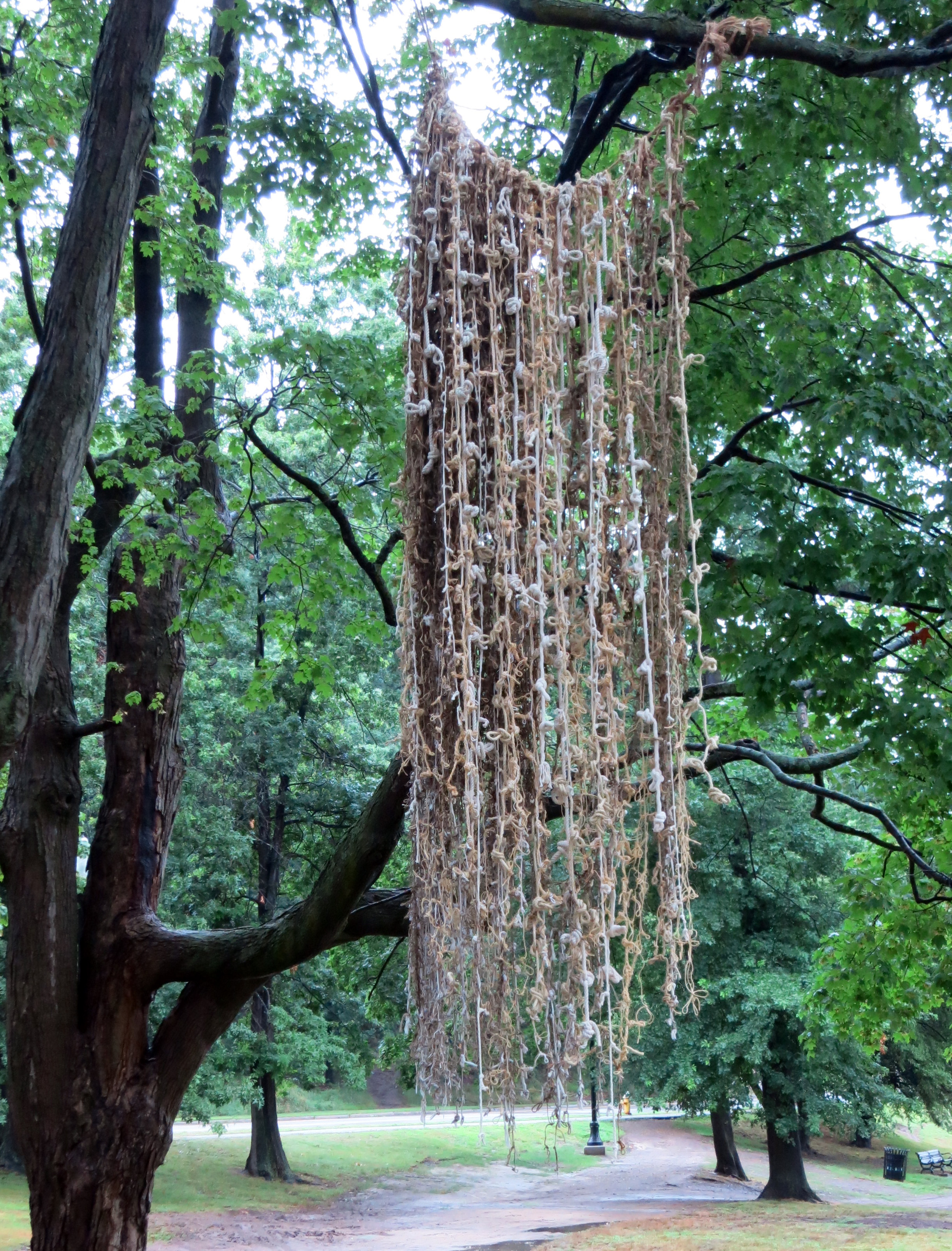“A work of art is not a piece of fruit lifted from a tree branch: it is a ripening collaboration of artist, receiver, and world.”
—Jane Hirshfield
Outdoor sculpture is always collaborative. The placement of the work, the ripples of water, the sunlight, tree bark, wind, and moss, all interact with the art. One Sunday morning in early August, a few weeks before the farm’s outdoor sculpture exhibit opened, I found myself alone — a rare event. I walked down to the studio. Warmed by the sun I decided I would ‘do some art’ outdoors. Working with dried branches from a Harry Lauder Walking Stick plant, a sculpture came together easily and spontaneously, making me doubt its worth. But as I walked past it in the week that followed, experimenting a little more and making a few changes, I decided there was something to it and included it in our outdoor sculpture exhibit.
Sitting in Limbo, Linda Hoffman
Last week, a visitor to the exhibit wrote, “My favorite was Sitting in Limbo. I was looking at it, then the wind began turning it around, and I received the beautiful surprise of the meditator sculpture.”
Sitting in Limbo, Detail
Inside, at the very center of this labyrinth of branches, sits a small meditating bronze figure. Inside the cacophony of the world, there is quiet. This viewer had her own collaborative experience with the wind and the sculpture. It surprised her — and we all delight when nature reveals something previously unseen. Her note to me was also a sweet surprise. Often artists don’t have any idea how their work is received.
Growing apples is also a collaborative endeavor. Soil, weather, the unique characteristics of a particular tree and the orchardist are all part of the cooperative effort of growing fruit. But applepicking is different than growing apples, and this is where I get into trouble. People come to the orchard to take home organic apples, not to have a transformational experience. In my truest of hearts, I am not an orchardist, but an artist; and I don’t particularly enjoy when people come to the orchard as if it was a supermarket with a commodity to grab and pay for. In fact, it’s best that I am not at the farmstand greeting and selling bags. Most problematic for me is that people have their own ideas about reality. Apples should look a certain way, and they should not have any blemishes. As an orchardist, I know that I could do better at growing our fruit, and I could focus on the varieties that the public most desires. But the work of artists is to show that there are other realities. Something lives behind appearances that the artist struggles to reveal. There are complex tastes inside apples such as Blue Permain, Caville Blanc, and Lyscom. Not all apples need have the delightful crunch and sweetness of a Honey Crisp, though there is no denying it’s a delicious apple.
As apple season closes, I realize how much I miss the epiphanies of the creative process. I miss the opportunity to be transformed by art. Especially when I look under the trees at all the apples knocked off, or tossed down with disdain because of some blemish, Jane Hirshfield’s words articulating the distinction between the collaborative nature of art and the casual singularity of picking an apple tugs at me. It’s something I have struggled with, yet failed to acknowledge. It is tied up with whether I am an artist or an orchardist — because it is hard to do both well.
Right now, however, as I try to make sense sitting inside my labyrinth of thoughts, I dream of the possibility that our small orchard can become a place where there is a ripening collaboration between the picker, the grower, and fruit — Applepicking as Art.









